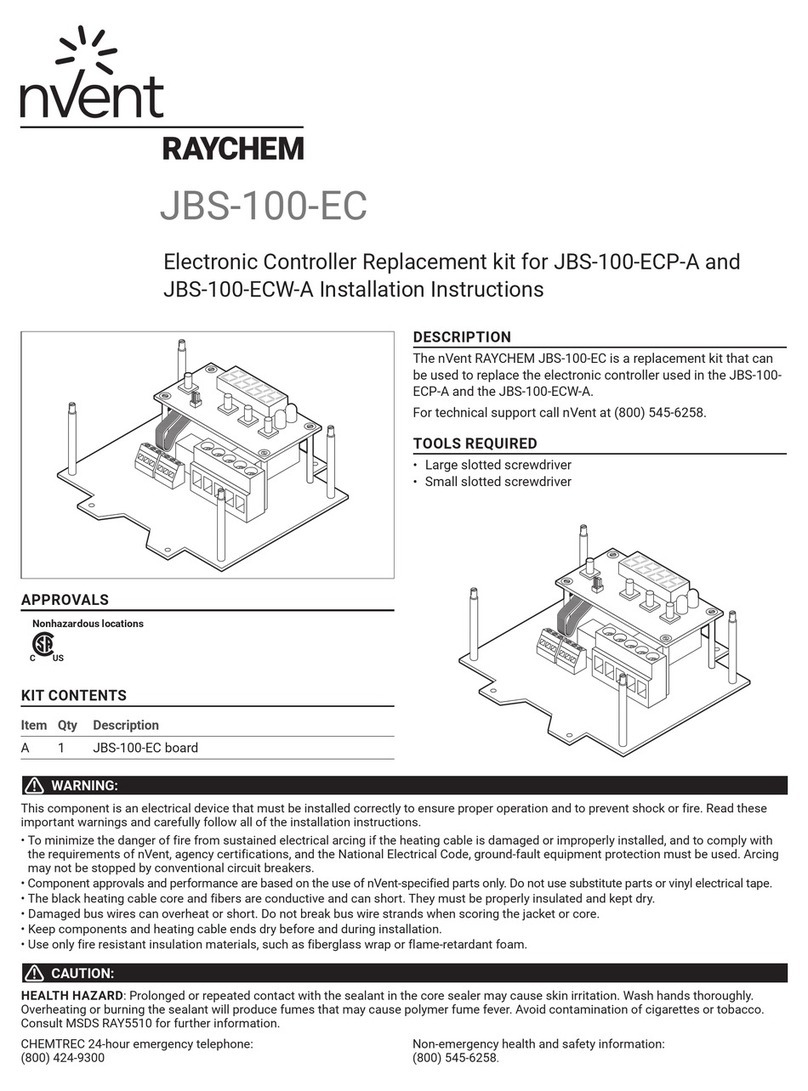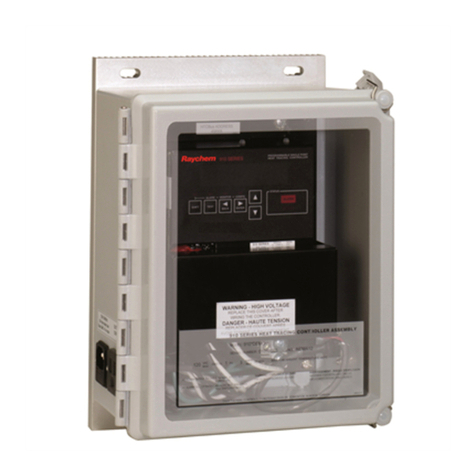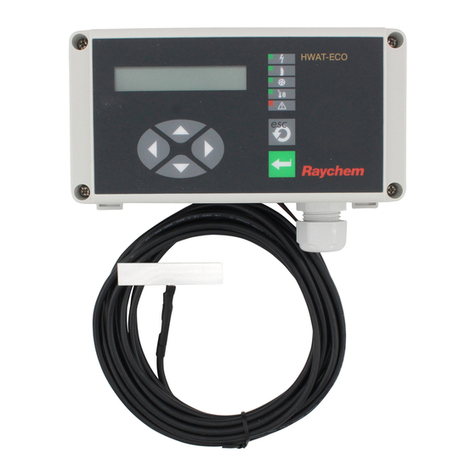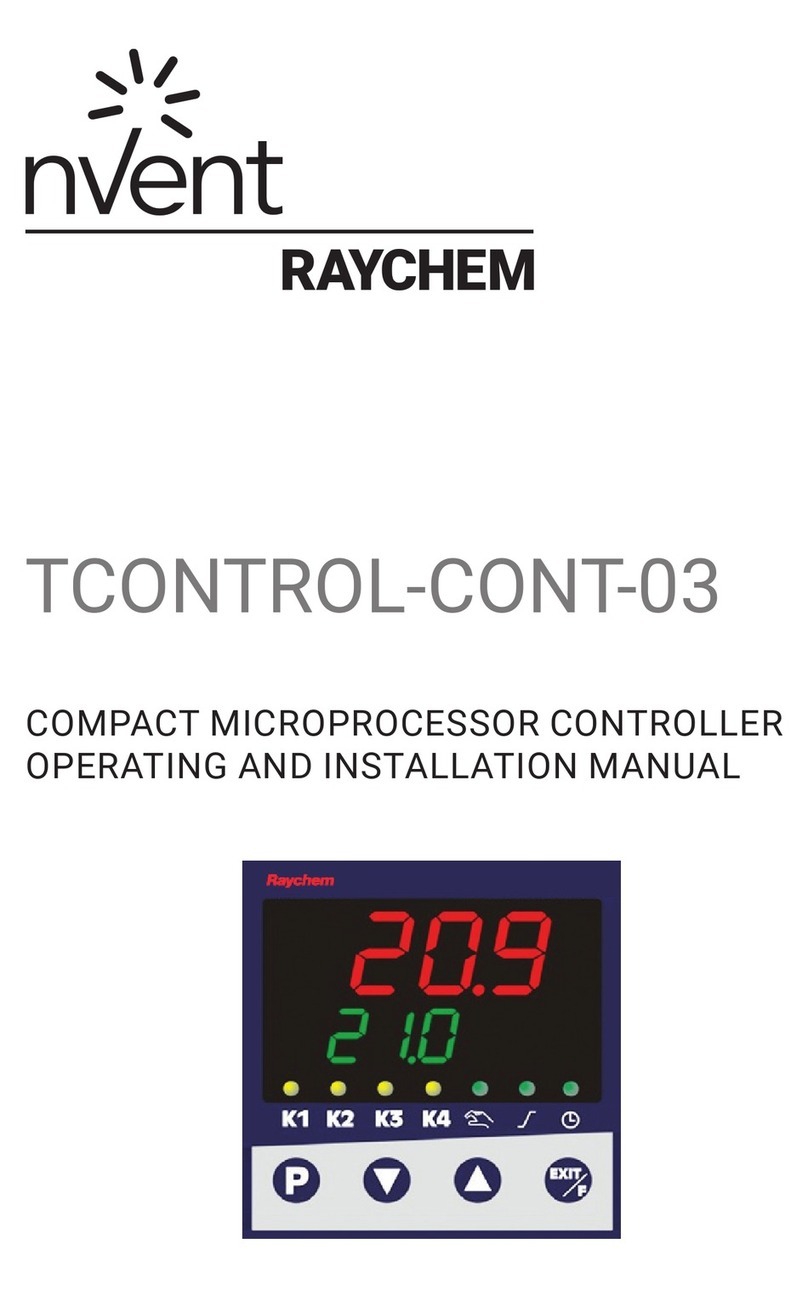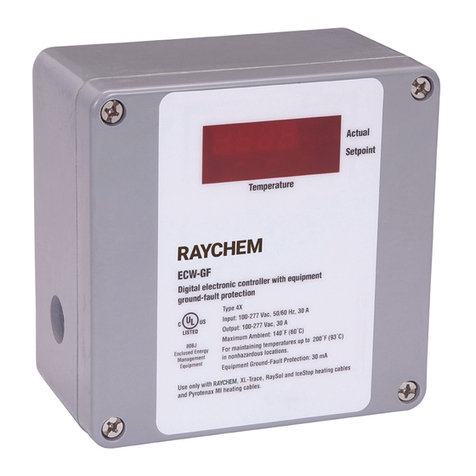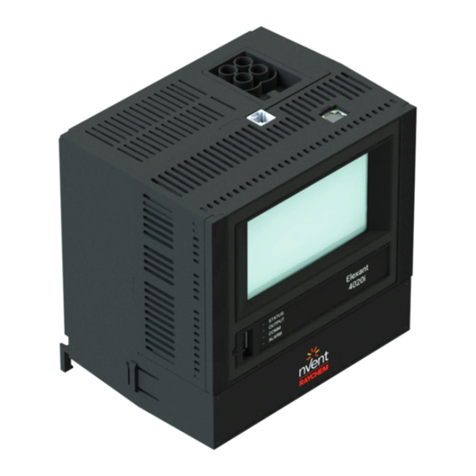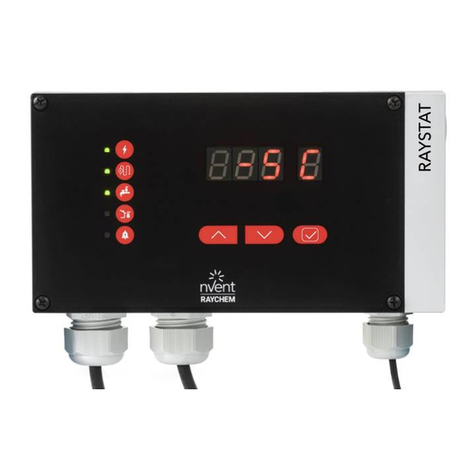
nVent.com |9
1.3.2 AC 2000+ PROGRAMMING DEVICES
When using an AC 2000+ alarm/communications interface card, only programming devices
that support the Modbus protocol (Personal Computer, PLC, or DCS) may be used to access
the parameters and data of a RAYCHEM T2000 HTC.
When using a personal computer, we recommend using the RAYCHEM Supervisor
Configuration and Monitoring software to manage your RAYCHEM control system. The
software allows you to configure and monitor any RAYCHEM controller installed in the field
which includes an appropriate communications interface. The software also supports alarm
monitoring, with the ability to acknowledge and clear alarms, and advanced features such as
data logging, trending, recipes and batching.
For portable solutions, use the RAYCHEM PPD-IND or PPD-HAZ Portable Programming
Devices. These Windows CE-based PDAs (Personal Digital Assistants) provide an intuitive,
graphical user interface for configuration and troubleshooting. Access to all AC2000+
parameters is available, and interface cables are included to allow easy connection to your
T2000 panel. For more information, refer to the Portable Programming Device (PPD) Software
Installation and Operating Instructions document (H57402).
1.4 CONTROL MODULE OVERVIEW
1.4.1 DESCRIPTION
The CM 2000 and the CM 2000+ control modules, used in the RAYCHEM T2000 HTC each
control, monitor, and communicate alarms and data for a single heating circuit. As single point
controllers, they offer a complete range of features as well as superior reliability. The ability
to install the units in Class 1, Division 2 hazardous areas supports direct field installation if
desired.
The option to use either an external solid-state relay (SSR) or an external contactor to switch
single phase or three wire, three phase loads up to 600 VAC, makes the CM 2000/CM 2000+
control modules the most versatile products on the market.
1.4.2 FEATURES
A detailed description of available features in the CM 2000 and the CM 2000+ control modules
may be found in Section 3 of this manual. Highlights of specific features are included in the
following text.
Digital Readout
The actual temperature, the load current and the temperature setpoint are immediately
accessible to plant operators and maintenance staff. The display units are field selectable in
°For°C.
–40 to 149°F (–40 to 65°C) Operation
Extended temperature operation permits installation in all but the harshest environments.
Single or Dual Temperature Sensor Inputs
The ability to utilize one or two temperature sensor (TS) inputs, allows the selection of one of
nine control modes and programming of all temperature parameters.
High and Low Temperature Alarms
High and low temperature alarms are offered for both temperature sensor inputs.
High and Low Current Alarms
The low current alarm is more than just a continuity level alarm. The control module offers full
adjustment of both the high and the low alarm points over the entire current measurement
range.
Solid-state Relay (SSR) or Electro-mechanical Relay (EMR) Output
The CM 2000/CM 2000+ control modules are used with the CT 2000 current/switch module
to monitor load and ground fault currents as well as drive a remote electro-mechanical relay
(EMR) output switch. The CT 2000-HAZ current module is used to monitor load and ground
fault currents when driving a solid-state relay (SSR). With the SSR option, the user may
select a time-proportional control algorithm, a simple deadband control algorithm, or one of
two ambient control algorithms. The EMR version always uses either the deadband control
algorithm or the proportional ambient contactor control algorithm. Switching device failure
alarms are supported for both types of output devices.
